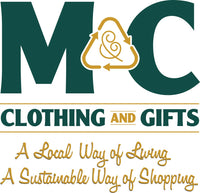Shopping secondhand offers numerous benefits both socially and environmentally. Here are some facts, figures, and percentages to illustrate these advantages:
1. Reduction in Waste:
-According to the Environmental Protection Agency (EPA), in the United States alone, about 16 million tons of textile waste is generated each year, with only 15% being recycled.
-Shopping secondhand reduces the demand for new clothing production, thereby decreasing the amount of textile waste sent to landfills.
2. Conservation of Resources:
-It takes an immense amount of resources to produce new clothing, including water, energy, and raw materials. For example, it can take up to 2,700 liters of water to produce a single cotton t-shirt.
-By choosing secondhand, consumers help conserve these valuable resources and reduce the environmental impact of clothing production.
3. Carbon Footprint Reduction:
-The fashion industry is a significant contributor to carbon emissions, with estimates suggesting it accounts for about 10% of global carbon emissions.
-Shopping secondhand reduces the demand for new clothing, which in turn lowers the carbon footprint associated with manufacturing, transportation, and distribution.
4. Support for Ethical Practices:
-Many secondhand retailers and thrift stores support charitable causes or employ disadvantaged individuals, contributing positively to local communities.
-By shopping secondhand, consumers can support these initiatives and promote ethical business practices in the fashion industry.
5. Cost Savings:
-Secondhand clothing is often more affordable than buying new, allowing consumers to save money while still acquiring quality items.
-The resale market offers a wide range of options, from designer labels to everyday essentials, at discounted prices.
6. Promotion of Circular Economy:
-Embracing secondhand shopping promotes a circular economy model where products are reused, repaired, and recycled, rather than discarded after a single use.
-This shift towards circularity fosters sustainability and reduces the overall
environmental impact of consumerism.
7. Statistics and Trends:
-According to ThredUp's 2021 Resale Report, the secondhand market is expected to reach $77 billion by 2025, growing at a rate five times faster than traditional retail.
-A study by McKinsey & Company found that the resale market could capture 13% of the total apparel market by 2023, up from just 7% in 2019.
By considering these facts and figures, consumers can make informed choices that not only benefit themselves but also contribute to a more sustainable and socially responsible fashion industry.
Amount of textile waste that is sent to landfills:
The amount of textile waste sent to landfills globally is staggering. According to data from the Ellen MacArthur Foundation, it is estimated that the equivalent of one garbage truck of textiles is landfilled or incinerated every second. That's around 92 million tons of textile waste per year! This waste includes everything from clothing and footwear to household textiles like bedding and curtains.
The fashion industry is particularly culpable, with fast fashion contributing significantly to this problem due to its disposable nature and rapid turnover of trends. Many textiles also contain synthetic fibers that do not decompose easily, exacerbating the environmental impact.
Efforts to reduce textile waste include promoting sustainable fashion practices, such as buying fewer items but of higher quality, recycling and upcycling old clothing, and supporting brands that prioritize eco-friendly production methods and materials. Additionally, increasing awareness about the environmental consequences of textile waste and advocating for better waste management systems are essential steps in addressing this issue.
